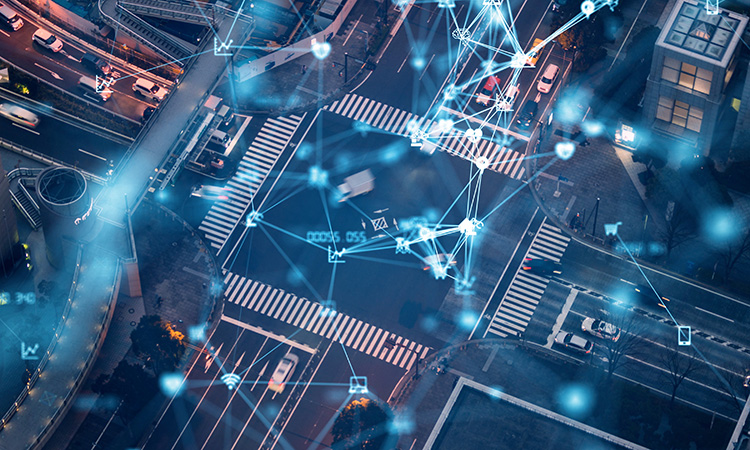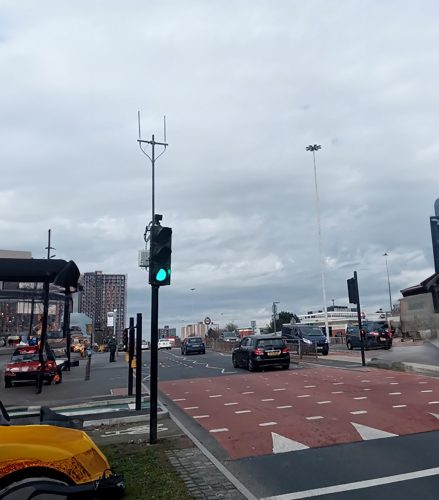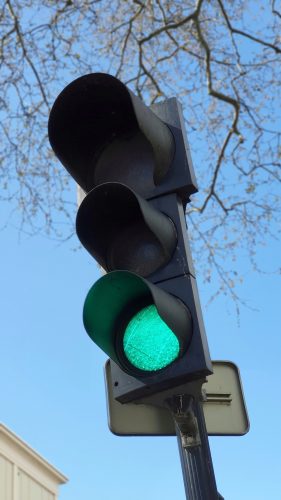The evolving landscape of 5G and digital connectivity in smart cities
- Like
- Digg
- Del
- Tumblr
- VKontakte
- Buffer
- Love This
- Odnoklassniki
- Meneame
- Blogger
- Amazon
- Yahoo Mail
- Gmail
- AOL
- Newsvine
- HackerNews
- Evernote
- MySpace
- Mail.ru
- Viadeo
- Line
- Comments
- Yummly
- SMS
- Viber
- Telegram
- Subscribe
- Skype
- Facebook Messenger
- Kakao
- LiveJournal
- Yammer
- Edgar
- Fintel
- Mix
- Instapaper
- Copy Link
Posted: 6 March 2024 | Sam Li - Transport for Greater Manchester | No comments yet
For Intelligent Transport, Sam Li, Senior Innovation Officer at Transport for Greater Manchester, provides an insightful perspective on how 5G and digital connectivity solutions are revolutionising the way that we manage transportation and enhance the overall mobility experience.


Status of 5G and digital connectivity growth


Credit: Transport for Greater Manchester
5G and digital connectivity (such as LORAWAN, NBIoT, Wifi6) has been growing in its importance for city regions as the development and deployment of smart city technologies gains pace. Digital solutions provide a new way to generate efficiency and cost saving like never before, driven by big data sources and artificial intelligence (AI) solutions.
For the past few years, the Department for Digital, Culture, Media and Sport (DCMS) and the Department for Science, Innovation and Technology (DSIT) have supported several major programmes of activities to accelerate the adoption of new 5G use cases in applied innovation demonstration and trials via the 5GCREATE programme. Whilst the trial in different sectors has proven to create real world impacts and benefits, the commercialisation is still challenging. Working on the programme is critical to develop a stack of different use cases utilising the same connectivity backhaul to ensure a good return on investment on the infrastructure.
Reliable high bandwidth connectivity has grown in importance, particularly post-pandemic, as flexible working behaviour persists. This has created a step change in people’s mobility habits, reducing the need to travel and provide more flexibility in the way that they can access public and private services. A key consideration is how investing in digital connectivity will be a critical tool to achieve Greater Manchester’s net zero ambitions.
What does this mean for transport and the mobility sector?
There are several use cases and applications for 5G and digital connectivity within the transport sector. These are some of the areas that Transport for Greater Manchester (TfGM) is exploring to deliver broader benefits:
- Connected vehicles: increasingly, new vehicles contain a massive range of sensors that collect terabytes of data, which can be useful for the real-time management of our highway network. In the future, a Data-as-a-Service (DaaS) model can help TfGM to better understand the movement of vehicles
- Connected micro-mobility: new modes such as e-scooters and e-bikes provide a range of Internet of Things (IoT) sensors; connectivity enables this solution to communicate in real‑time to traffic management systems for things like green waves to improve the customer experience
- Autonomous vehicles (AVs): the low latency and bandwidth of 5G is critical to support remote operation to take control during edge case scenarios, in addition to infotainment use cases
- Artificial intelligence (AI) camera/CCTV computer vision: with the development of AI, any camera feed can be processed using machine learning (ML) capabilities, enhancing their capability.
5G Smart Junctions & GMCA LFFN


Credit: Transport for Greater Manchester
One of the key use cases that TfGM has developed and implemented to date is the 5G Smart Junction, funded as part of the DCMS/DSIT 5GCREATE programme. The aim of this project is to use AI to optimise traffic signals, enhanced by utilising 5G communications at several junctions in Salford. The use of video analytics sensors to detect speed, path, journey time and queue data for vehicles, cyclists and pedestrians is fed into an AI model using 5G technology to send the data to the cloud. Utilising 5G to reduce the civils costs for expensive cabled routes between traffic signal controllers and between sensors and controllers helps us to future proof our connectivity needs and makes the requirement for an ADSL connection at each controller redundant.
The project created a publicly owned private 5G network that provides a consistent secure low latency 5G network for the Smart Junction sensor to utilise. The data generated was sent back in real‑time and fed into the AI traffic management system. The project demonstrates a level of efficiency saving and an improvement in the junction’s operation. More importantly, it reduces the traditional infrastructure cost associated with fixed telecom infrastructure. The 5G connectivity enables the collection of evidence regarding the role of digital technology in utilising existing highway infrastructure in a more efficient manner, in comparison to traditional civil infrastructure deployment. The project itself enables a data driven approach to achieve policy objectives, changing the focus beyond improving car journeys to improving the experience to other road users, such as buses, pedestrians and cyclists.
The project’s aim was to create a scalable blueprint of the deployment on a regional scale. Building upon the foundation of the GMCA Local Full Fibre Network (LFFN), which connects to 776 traffic signal sites within the Greater Manchester region. The aspiration is for a number of these sites on our strategic corridor to provide 5G connectivity, enabling the rapid deployment of other connected places technology and solutions. Further deployment is needed to determine the business case for a widespread roll-out as, currently, there is no single use case that can provide the return on investment. For Greater Manchester, we aim to explore the concept of ‘stacking’ use cases across sectors to maximise the impact and benefit of the connectivity. This will include use cases in sectors such as health, energy and education.
What does the future hold and what role does connectivity need to play?
As the world moves to 5G and new connected places application, the risk of opening a new vector of attack is always a risk that needs to be considered”
As connected places application become more dependent on real-time data for their operation, this creates a need for a level of resilience for connectivity beyond 5G and fixed connectivity. This is where the growth of space technology, location technology and communication will help to provide the secure fallback for connectivity, as well as added value. Some of these opportunities and risks are outlined in a recently published report by the geospatial commission1.
As the world moves to 5G and new connected places application, the risk of opening a new vector of attack is always a risk that needs to be considered. What consideration do we need to make to enable innovation to be deployed at a rapid rate on 5G, whilst maintaining a secure network? Do city regions need to consider segmented digital infrastructure to provide connectivity exclusively to critical infrastructure application for the region, e.g. traffic signals? NCSC has been developing new guidance and principles for public sector to consider as it looks to roll-out connected places application2.
References
- Finding the way forward: Location data to enable connected and automated mobility – GOV.UK (www.gov.uk)
- Connected Places Cyber Security Principles – NCSC.GOV.UK


Related topics
5G & Transport Communications, Artificial Intelligence, Connected & Autonomous Vehicles, IoT (Internet of Things), Passenger Experience, Public Transport, Sustainable Urban Transport
Issue
Issue 4 2023
Related modes
Autonomous vehicles, Bikes & Scooters, Bus & Coach
Related cities
Greater Manchester
Related countries
United Kingdom
Related organisations
Greater Manchester Combined Authority (GMCA), Transport for West Midlands (TfWM)
Related people
Sam Li








